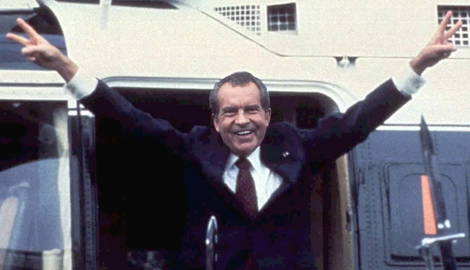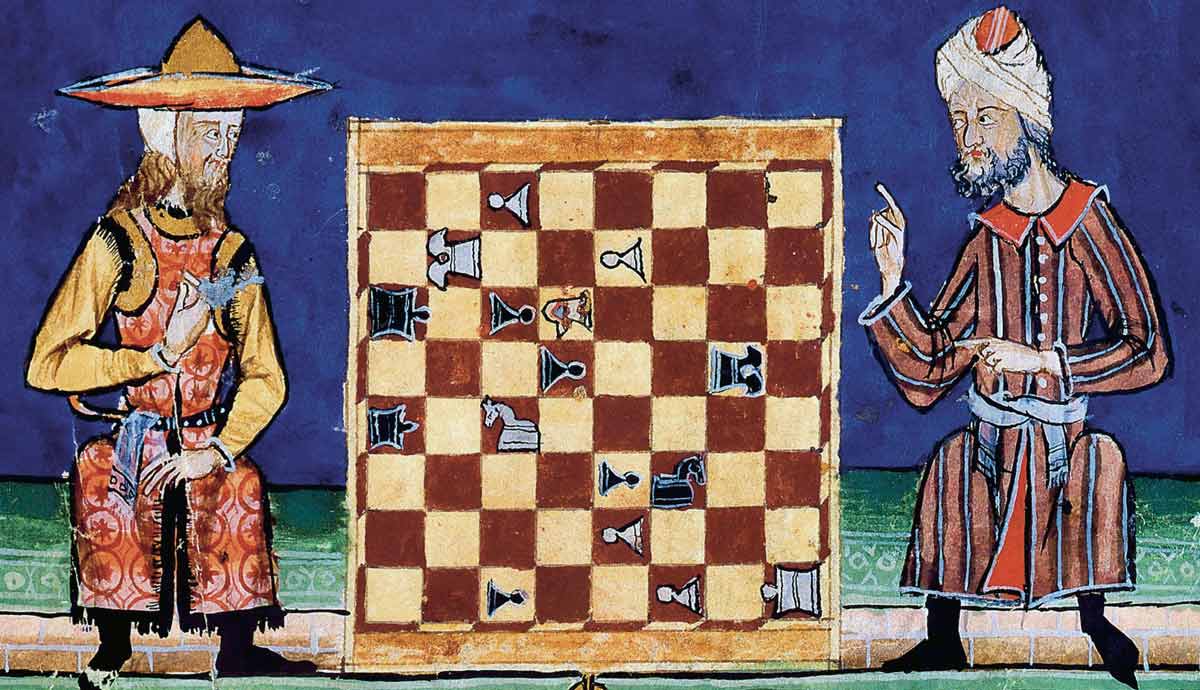
Richard Nixon, the 37th President of the United States, resigned from office in 1974, after the Watergate Scandal exposed the engagement of his administration in a broad array of illegal activities. These “dirty tricks” included burglary, political sabotage, wiretapping, and the obstruction of justice. Despite Nixon’s infamous claim that he was “not a crook,” the release of secret White House tapes revealed his direct involvement in Watergate and the ensuing cover-up. Facing near-certain impeachment, Nixon chose to resign before he was pushed on August 8th, 1974.
Early Life and Career

Richard Milhous Nixon was born on January 13th, 1913, into a Quaker family in the small Californian town of Yorba Linda. His parents ran a lemon farm that failed in 1922, leading the Nixons to move to Whittier, California, where they opened a gas station and grocery store.
After attending Whittier College and Duke University School of Law, Nixon passed the California bar exam in 1937. After applying to the FBI – and receiving no response – he went on to join a local law firm. During World War II he served in the US Navy in the South Pacific before retiring from active duty in 1946.
Nixon’s political career officially began when his military career came to an end. In 1946, he was elected to the US Congress, where he gained early recognition as a prominent member of the House Un-American Activities Committee. In 1950, Nixon was elected to the Senate, and in 1953, he became the 36th Vice President of the United States under President Dwight D. Eisenhower.
Nixon In Power

Richard Nixon first ran for President in 1960 but was narrowly defeated by John F. Kennedy. After a failed bid to become Governor of California in 1962, he mounted a remarkable political comeback to become President of the United States in 1968.
As president, Nixon achieved several significant foreign policy achievements. Alongside his influential National Security Advisor, Henry Kissinger, Nixon opened diplomatic relations with China and pursued a policy of detente with the Soviet Union. He initially escalated the Vietnam War into Cambodia and Laos, before shifting the burden of fighting onto South Vietnamese forces and gradually withdrawing US troops.
Domestically, Nixon’s policies mixed progressive and conservative politics. He created the Environmental Protection Agency (EPA) and signed the Clean Air Act of 1970. In 1971, he inaugurated the “War on Drugs” and declared drug abuse to be “public enemy number one.”
The Watergate Scandal

The Watergate scandal began on 17th June 1972, when five men were arrested for breaking into the Democratic National Committee headquarters at the Watergate office complex in Washington, DC. The men were linked to Nixon’s 1972 re-election campaign, specifically a group called the Committee to Re-Elect the President (CREEP). It soon transpired that the breaking was part of a wider pattern of the Nixon administration’s political misdeeds and illegal activities.
Initially, Nixon’s administration successfully covered up its involvement in the burglary and Nixon was re-elected by a landslide in November 1972. However, owing to a combination of investigative journalism and whistle-blowing within the FBI, a fuller picture of the administration’s illegal activities was uncovered.
The most explosive revelation for the president came with the discovery that he had secretly recorded his conversations in the Oval Office. The so-called “Watergate Tapes” provided direct evidence that Nixon had been involved in attempts to cover up the break-in, authorized the payment of hush money to the burglars, and pressured the FBI to stop the investigation.
Nixon’s Resignation

President Nixon initially tried to contain the fallout from Watergate. In a televised address to the nation on April 30th, 1973, he claimed to be innocent, blamed his aides for keeping him in the dark, and infamously declared that he was “not a crook.” Nixon vowed to take personal charge of the investigation and discover the truth. However, the ongoing investigation by the Senate Watergate Committee continued to expose serious abuses of power. Televised hearings featured key witnesses, including White House Counsel, John Dean, who implicated Nixon in the cover-up.
The release of the so-called “Nixon Tapes” from the Oval Office in 1974 inflicted the final blow. They proved that the president had lied to the public and had been directly involved in a plot to obstruct the Watergate investigation. Facing almost certain impeachment by Congress and a catastrophic loss of political support from his own party, Richard Nixon announced his resignation on August 8th, 1974. In doing so he became the first and only president to resign in US history.










